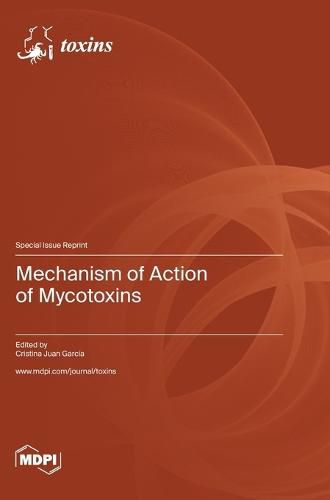Readings Newsletter
Become a Readings Member to make your shopping experience even easier.
Sign in or sign up for free!
You’re not far away from qualifying for FREE standard shipping within Australia
You’ve qualified for FREE standard shipping within Australia
The cart is loading…






This title is printed to order. This book may have been self-published. If so, we cannot guarantee the quality of the content. In the main most books will have gone through the editing process however some may not. We therefore suggest that you be aware of this before ordering this book. If in doubt check either the author or publisher’s details as we are unable to accept any returns unless they are faulty. Please contact us if you have any questions.
Mycotoxins are a diverse group of chemicals that present wide toxicological responses in animals and humans. Their ingestion causes toxic effects that go from acute toxicity to long-term or chronic health disorders. Some mycotoxins have caused outbreaks of human toxicoses, and at least one mycotoxin, aflatoxin B1, is an assumed human hepatocarcinogen. As part of a comprehensive effort to curtail the adverse health effects posed by mycotoxins, substantial research has been conducted to determine the mechanism of action of mycotoxins. Although much information has been obtained regarding the action of several mycotoxins, future research topics should continue to address several areas of critical concern.
In vitro studies in different cell lines could detail and explain many of these mechanisms, while in vivo can give a real scenario in the development of a toxic effect.
This Special Issue of Toxins collected the most recent reports on the mechanism of action of mycotoxins on single or combined mycotoxins studied in vivo or in vitro, the identification of known and unknown mycotoxins metabolites and other metabolites in different cell lines and animals or matrices (including organs, urine, or blood), and the development of analytical skills to study these mechanisms. A total of eleven papers, eight research papers and three review articles, are included in this reprint.
$9.00 standard shipping within Australia
FREE standard shipping within Australia for orders over $100.00
Express & International shipping calculated at checkout
This title is printed to order. This book may have been self-published. If so, we cannot guarantee the quality of the content. In the main most books will have gone through the editing process however some may not. We therefore suggest that you be aware of this before ordering this book. If in doubt check either the author or publisher’s details as we are unable to accept any returns unless they are faulty. Please contact us if you have any questions.
Mycotoxins are a diverse group of chemicals that present wide toxicological responses in animals and humans. Their ingestion causes toxic effects that go from acute toxicity to long-term or chronic health disorders. Some mycotoxins have caused outbreaks of human toxicoses, and at least one mycotoxin, aflatoxin B1, is an assumed human hepatocarcinogen. As part of a comprehensive effort to curtail the adverse health effects posed by mycotoxins, substantial research has been conducted to determine the mechanism of action of mycotoxins. Although much information has been obtained regarding the action of several mycotoxins, future research topics should continue to address several areas of critical concern.
In vitro studies in different cell lines could detail and explain many of these mechanisms, while in vivo can give a real scenario in the development of a toxic effect.
This Special Issue of Toxins collected the most recent reports on the mechanism of action of mycotoxins on single or combined mycotoxins studied in vivo or in vitro, the identification of known and unknown mycotoxins metabolites and other metabolites in different cell lines and animals or matrices (including organs, urine, or blood), and the development of analytical skills to study these mechanisms. A total of eleven papers, eight research papers and three review articles, are included in this reprint.